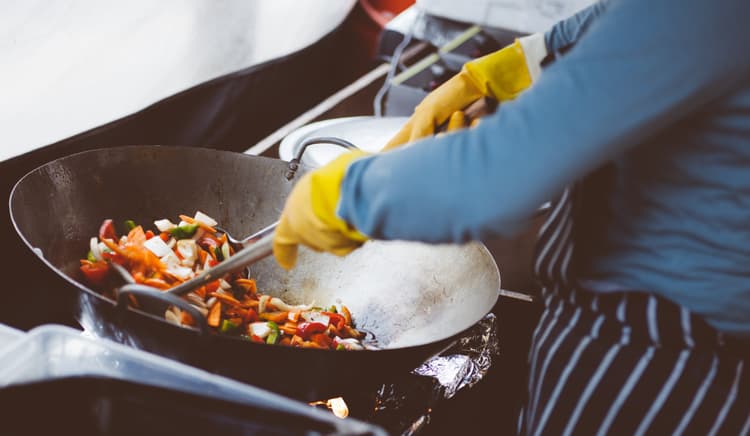Myths about teaching can hold you back
- Year 8
Eat local to taste the world
I can locate the origin of ingredients for different worldwide cuisines.
- Year 8
Eat local to taste the world
I can locate the origin of ingredients for different worldwide cuisines.
These resources will be removed by end of Summer Term 2025.
Switch to our new teaching resources now - designed by teachers and leading subject experts, and tested in classrooms.
These resources were created for remote use during the pandemic and are not designed for classroom teaching.
Lesson details
Key learning points
- There are a wide range of cuisines, ingredients, cooking techniques and equipment used around the world.
- 58% of food consumption comes from the UK, 23% from the EU and 19% worldwide, due to season, cost, climate and variety.
- Ingredients produced in the UK can be used to prepare a range of dishes, although some ingredients need to be imported.
- There are advantages to buying food locally and seasonally in the UK, such as reduced environmental impact and cost.
- Reducing the amount of food wasted at each stage of the farm to fork journey has financial and environmental benefits.
Keywords
Cuisine - a style or method of cooking (in a country, region or restaurant)
Import - bring goods in from another country for sale
Export - send foods to another country for sale
Cooking technique - the way food is prepared and cooked
Common misconception
The UK produces all of its own food.
The UK produces 58% of the food it consumes, 42% is imported from other countries. This is due to season, cost, climate, and to add variety to the diet.
To help you plan your year 8 cooking and nutrition lesson on: Eat local to taste the world, download all teaching resources for free and adapt to suit your pupils' needs...
To help you plan your year 8 cooking and nutrition lesson on: Eat local to taste the world, download all teaching resources for free and adapt to suit your pupils' needs.
The starter quiz will activate and check your pupils' prior knowledge, with versions available both with and without answers in PDF format.
We use learning cycles to break down learning into key concepts or ideas linked to the learning outcome. Each learning cycle features explanations with checks for understanding and practice tasks with feedback. All of this is found in our slide decks, ready for you to download and edit. The practice tasks are also available as printable worksheets and some lessons have additional materials with extra material you might need for teaching the lesson.
The assessment exit quiz will test your pupils' understanding of the key learning points.
Our video is a tool for planning, showing how other teachers might teach the lesson, offering helpful tips, modelled explanations and inspiration for your own delivery in the classroom. Plus, you can set it as homework or revision for pupils and keep their learning on track by sharing an online pupil version of this lesson.
Explore more key stage 3 cooking and nutrition lessons from the Local food to worldwide cuisine unit, dive into the full secondary cooking and nutrition curriculum, or learn more about lesson planning.

Equipment
Licence
Prior knowledge starter quiz
6 Questions
Q1.What is the list of food used in a recipe called?
Q2.Which of these are types of food production?
Q3.Match the country to its traditional food.
pizza and pasta
sushi and miso soup
tacos and burritos
fish and chips
Q4.What might influence what we eat consciously?
Q5.Packaged foods have food which inform us where the food comes from.
Q6.A cuisine is ...
Assessment exit quiz
5 Questions
Q1.True or false? The UK produces all of its own food.
Q2.Food grows seasonally and, when not in season in the UK, is __________ so consumers can easily buy what they want.
Q3.Match the ingredients to the country:
spices
rice and fish
cassava
pasta
Q4.Which of these shows tandoori cooking technique?



Q5.Which piece of equipment is used to steam food, such as vegetables?






